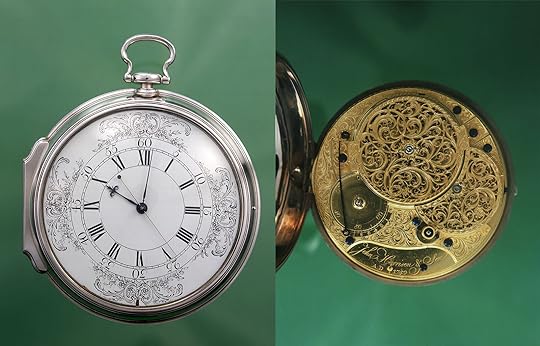What do you think?
Rate this book


288 pages, Hardcover
First published June 13, 2023



Very interesting, while it was about clocks.
A fascinating and elucidating trip through the history of human timekeeping, told by a master clock maker with the ability to appreciate the engineering and design of each new invention and improvement. This is one of the few Audible titles where I went looking for an accompanying PDF, hoping to see some of the wondrous objects being described; alas, only to come up empty. If this were the whole of the book (and had a PDF), it would easily have been 5 stars.
Unfortunately, Rebecca often drifts off course into politics, economics, and sociology, wherein her talents clearly do not lay. Just as one example: a whole chapter serves no purpose in furthering the story of time keeping, and only exists so that at the end she can trumpet the virtues of socialized healthcare; a chapter in which she recounts how her (socialized) doctors misdiagnosed and gaslit her for years telling her repeatedly that her symptoms were imaginary until she badgered them into doing more tests that revealed she had MS. Yeah, not exactly a ringing endorsement of the NHS despite the literary 'happy ending' she gave it in that chapter. And despite being one of the most skilled and sought-after (not to mention highly-paid) practitioners in her field, she is constantly entreating the audience to see her as a victim for being, alternatingly, not like the other girls (a girl who makes clocks, can you even imagine!), and not like the other clock makers (a clock maker who is a girl, preposterous!).
The entire work would be a little bit shorter, and a whole lot better if Rebecca had simply stuck to the subject at hand.
Nell’Ottocento gli occidentali consideravano i minatori messicani «indolenti e infantili» e notavano la loro «mancanza di iniziativa, l’incapacità di risparmiare, le assenze per via delle troppe festività, la disponibilità a lavorare solo tre o quattro giorni alla settimana se questo bastava a coprire le necessità, l’insaziabile desiderio di alcol – tutto ciò veniva considerato prova di una naturale inferiorità»
A parte il desiderio di alcol, in un’epoca in cui molti hanno perso completamente l’equilibrio tra lavoro e vita privata, si potrebbe sostenere che fosse il minatore messicano del XIX secolo a essere nel giusto.